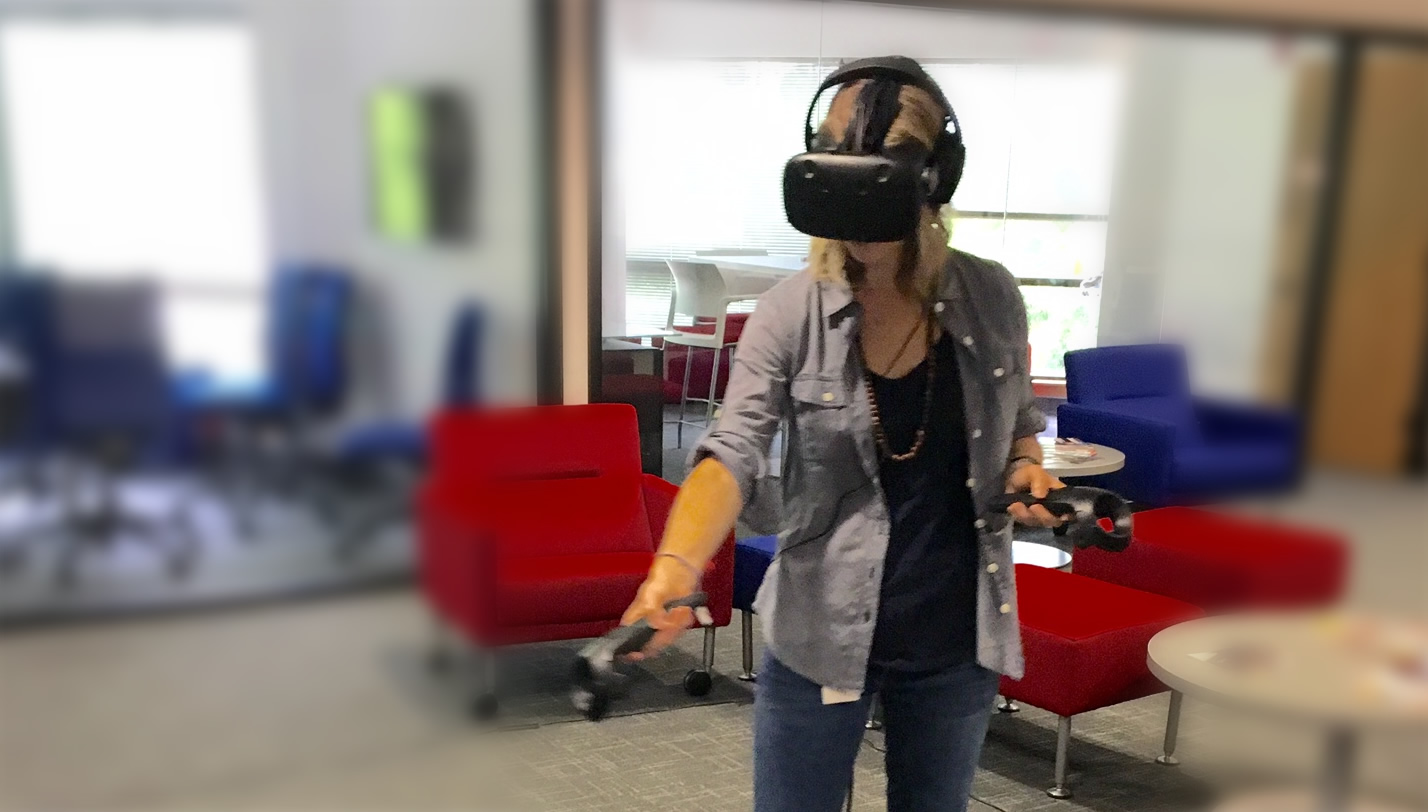Recently, I enjoyed a truly immersive VR experience. At PT, we’re constantly testing new devices in our datacenter, our client device test beds, and even in our common areas. Last week, staffers donned a VR headset, put on headphones, and stepped inside any number of virtual worlds during a two-day, company-wide VR demonstration[i]. I was amazed by the reality of the experience.
The first world I stepped into was Ikea VR Experience. The app transported me to a life-sized virtual kitchen. I could change the color of the cabinets with a pull of the trigger, open drawers with the twist of my wrist, and even pick up (and in my case, spill) a bowl of the delicious Swedish meatballs Ikea is known for.
In a separate app, I used virtual tools to maintain a machine. I had robots guiding me through each step. I interacted with an exploded-view 3D diagram of the device, which let me see the relationship of its various parts. While I was working, I received real-time feedback on my progress. When I made what turned out to be a game-changing mistake, the machine fell apart and crashed through the floor. One of my robot guides offered its regrets at this point. The experience demonstrated the real-world consequences of my failure, but because it was only virtual failure, I instantly wanted to try again until I got it right.
This is how we want all learners to react when they go through a learning experience. Setbacks in a safe environment can lead to success.
Getting learners to push through failure is only one benefit of VR training. Another is completely immersing the learner in the learning experience. Focus is the key to achievement. I wasn’t checking email during the session, nor was I texting or instant messaging. I wasn’t even thinking about my to-do list. I was fully focused on repairing the device in front of me. This is our goal as we design learning experiences, and VR, by its very nature, helps us achieve that level of focus.
My VR experience touched on yet another important benefit of using VR for immersive training: real-time feedback on head and hand movements. My robot guides were watching everything I did.
This advance in technology adds new possibilities to all training opportunities. We recently completed a game on high-quality CPR for the American Heart Association. This training tool monitors the pace of a learner’s keystrokes and uses that information to determine how well they’re performing. Imagine what would happen if learners could also immerse themselves in a VR version of this course. The VR learner would receive real-time feedback not only on pace, but also on hand positions and technique as they practiced resuscitating an individual. Think of the implications!
A key point to keep in mind when designing VR training is that narrative remains extremely important. Telling an engaging story with compelling characters is essential. You might also include humor, when appropriate, and design environments that contain memorable details, like the meatballs.
I’ve been around long enough to see many evolutions in instructional technology, from laser disk, to CD-ROM, to WBT, and now, to virtual reality. This progression is what makes the field of instructional design so exciting.
We’ve only scratched the surface of instructional design for virtual reality training.
[i] The VR kit that PT used for the demonstration retails for $799 and includes a headset, two wireless controllers, and two base stations enabling 360° room-scale motion-tracking. I used my own headphones for audio. On the hardware side, for the cost of a monitor or a high-end tablet, users can go from a flat screen to an immersive experience.








